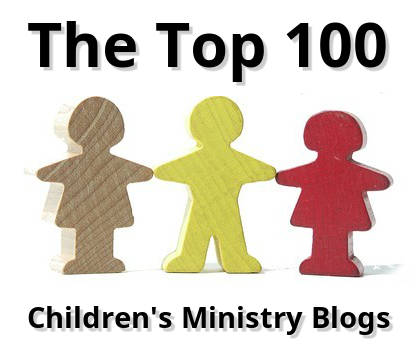Using Scripture, the plumb line for relationships.

Divorced and cohabiting parents/guardians are the norm for many children today. The Pew Research Center says that only 46% of children under 18 years of age in the US live in the original two-parent birth family.
For the most part, kids whose parents are divorced will have a skewed vision of what a successful marriage looks like. After all, they have watched their parents’ marriages fall apart. They have been exposed to dysfunctional families, and they have lived in fractured families.
Divorce leaves scars, and those scars can affect children’s emotions and their perception of what love looks like, feels like, and sounds like. It affects important future relationships, and now we are realizing from current research that divorce can adversely affect individuals’ health and well-being into their adult years.
You might say the walls in their families are tilted and crooked. They haven’t had any solid measuring device to evaluate their parents’ marriage. So how will Rachel, who has watched her dad and mom split up after the dad’s affair, and the millions of other children like her, know how to have a successful marriage?
Straightening the tilted walls
In the Bible, God uses the idea of a plumb line as His divine standard of measurement. Bible Gateway has a good description of what a plumb line is and how God uses the idea of a plumb line: “A cord weighted with lead that is used in building to check that vertical structures are true. It is used symbolically to refer to the divine standard against which God, the builder of his people, tests and judges them. It also symbolizes the standards by which God will rebuild his people.”
In a sense, God’s Word is a plumb line that helps us understand what love and marriage should look like. In simple terms, Christians follow God’s Word and build their marriages based on the principles set forth in passages such as 1 Corinthians 13:4–8 and Ephesians 5:21–32. But what about the children of divorce or cohabiting partnerships—will passages from a “foreign” book make sense? In this post, we’ll look at the love plumb line and how to use it to model love to children.
In part 2 of this article, we’ll look at the marriage plumb line and how to use it to give children a picture of a healthy marriage.
Love is WHAT?
Let’s take 1 Corinthians 13:4–8, the love passage. Many pastors will use this passage to describe what a healthy love relationship should look like. Love is patient, is kind, doesn’t envy, doesn’t boast, isn’t rude, etc.
While it sounds simple enough to many of us, to children of divorce this passage brings confusion and anger. Many of these children haven’t experienced the examples given in this passage. Here are just a few of the arguments they have given me.
- Love is patient? Not in my family. My mom yells at my dad all the time.
- Love is kind? Uh, I don’t think so. Not when my dad says mean things about my mom.
- Love does not envy? My mom is so jealous of my dad’s new girlfriend because she is skinny and my mom is overweight.
- Love does not boast? Both of my parents boast about their new loves and how great life is going to be now that each of them is in love—whatever that means.
- Love is not rude? Oh yes, it is rude. My grandma is just plain rude to my dad when he picks me up.
- Love keeps no record of wrongs? You should hear the list of things my mom says my dad did to her.
- Love trusts? How can you ever expect me to trust anyone when everyone I know has betrayed me?
- Love never fails? Love has failed both of my parents, and I’m afraid to fall in love for fear it’s going to hurt so much.
Modeling love
Since kids of divorce often haven’t seen love in the home and young children tend to have trouble understanding abstract concepts anyway, it’s important that you and other children’s workers model love before them. You must be the Jesus these kids need and give them His love. For example:
- Be patient. This means staying calm when children are acting up and not listening to you. This isn’t always an easy thing to accomplish.
- Be content and humble. Kids will detect your envy and pride in conversations about your life. Believe me, these kids are watching your every interaction and observing your every move.
- Be self-controlled. Even when they might not be. Many kids see their parent only as self-seeking and angry all the time. They could be dealing with a parent who is keeping track of every wrong done to them by the other parent. They observe parents who don’t want to know the truth and who may delight in evil. Your modeling gives them a true picture of the love talked about in 1 Corinthians. Your interactions with your own family model this love also.
- Exhibit trust, hope, and perseverance. These children have not experienced trust, hope, and perseverance between the two most important people in their young lives, their parents. All these children know is that love wasn’t enough to hold their parents’ marriage together. Whether you realize it or not, they are watching your “perseverance” with some of those “whirlwind” and out-of-control kids.
- Don’t keep a record of wrongs. Try not to bring up children’s past failures. Forgive them as Christ has forgiven you. Don’t hold grudges against children who tend to have a bad attitude or act out.
- Love is about giving up that which we value for someone else’s benefit. Look for ways you can make sacrifices to honor and bless the children you care for.
Who will help the children of divorce know how to rebuild their idea of love and marriage? Who will give them the plumb line to make sure the vertical structure of their marriage is true, solid, and straight, and will hold up?
I believe the church can be the starting place. Church leaders and church family can stand in the gap between the destruction and the construction of what a marriage should look like. We start by showing children of divorce our love toward them. Love, acceptance, understanding, and connections are paramount with the children who attend your church.
Get free email ministry tips. Subscribe to the DC4K blog here










This is great Linda thank very much God bless. I wouldn’t mind you sending me more of this for my sunday school work here in Eldoret Kenya.
Ignitius, you may use any of the posts on this blog for your Sunday School work in Kenya. Blessings on you and your ministry.
Pingback: DC4K » How to teach children of divorce about love and marriage, pt. 2